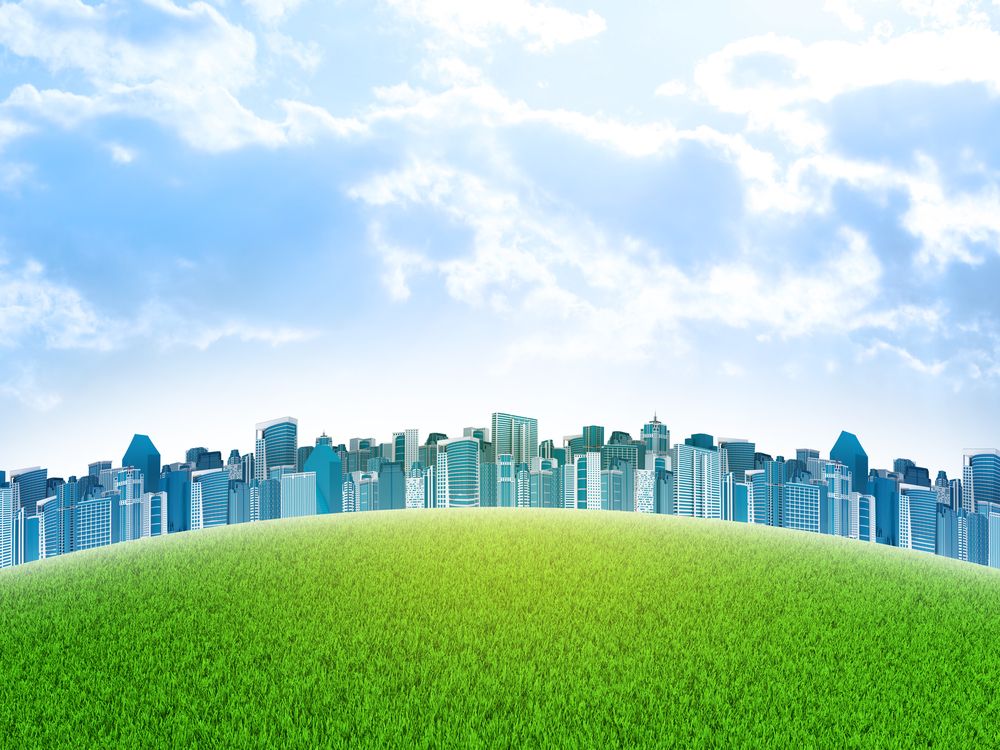Buildings, be they hotels, hospitals, IT parks, offices or residential spaces, are usually termed as energy guzzlers. From lighting up the structure to operating elevators, every single operational activity in a building requires energy. As a result, the impact of buildings on the environment can no longer be ignored. In fact, an International Energy Agency report shows that buildings are the largest energy  consuming sector in the world. They account for over one-third of total final energy consumption and are an equally important source of carbon dioxide emissions.
consuming sector in the world. They account for over one-third of total final energy consumption and are an equally important source of carbon dioxide emissions.
No wonder then that there are clarion calls from urban planners, citizens and environmentalists alike to curtail emissions from buildings and in turn reduce their carbon footprint. As a result, the world is slowly transitioning towards sustainable buildings. The first step towards making a building sustainable is making it energy-efficient. Various standards and certifications have been developed to identify sustainable constructions. They not only help you create and recognize environment-friendly buildings but also act as reference points for buildings aspiring to become sustainable.
Let us see some of the popular national and international green building certifications.
Creating a green world
GRIHA: Green Rating for Integrated Habitat Assessment, popularly known as GRIHA, is an independent platform for the interaction on scientific and administrative issues related to sustainable habitats in India. It was founded by The Energy and Resources Institute (TERI) with support from Ministry of New and Renewable Energy (MNRE).
 GRIHA framework was developed by TERI for new commercial, institutional and residential buildings. The rating system was further modified when it was adopted by MNRE. More than 300 projects across India are being constructed based on GRIHA guidelines. IIT Kanpur and Suzlon ‘One Earth’ Office Complex in Pune are two of the buildings in India that are 5-star GRIHA rated.
GRIHA framework was developed by TERI for new commercial, institutional and residential buildings. The rating system was further modified when it was adopted by MNRE. More than 300 projects across India are being constructed based on GRIHA guidelines. IIT Kanpur and Suzlon ‘One Earth’ Office Complex in Pune are two of the buildings in India that are 5-star GRIHA rated.
LEED: The U.S. Green Building Council is committed to creating environment-friendly buildings and healthier spaces for people. Among their many initiatives is LEED, a globally recognized green building certification program. It stands for Leadership in Energy & Environmental Design. LEED identifies the best-in-class building strategies and practices.
Buildings certified by LEED are energy-efficient thereby having a positive impact on people and environment. Currently, nearly 54,000 projects are part of LEED, comprising more than 10.1 billion square feet of construction space.
IGBC Rating Systems: Formed in 2001, the Indian Green Building Council’s objective was to promote sustainability and facilitate India to be one of the global leaders in the sustainable built environment by 2025. Among the many services the council offers are development of new green building rating programmes, certification services and green building training programmes.
IGBC Rating Systems include a number of sustainable practices that do not have an adverse effect on the environment. These rating systems are voluntary, consensus-based and market-driven. Some of them include IGBC Green New Buildings, IGBC Green Existing Buildings, IGBC Green Homes and IGBC Green Factory Buildings.
Energy Conservation Building Code: The Bureau of Energy Efficiency (BEE) was set up in 2002 by the Indian government to help in developing policies and strategies that aim at making the economy energy-efficient.
Subsequently, the Ministry of Power launched the Energy Conservation Building Code (ECBC) in 2007 to promote energy-efficiency in the building sector. It is estimated that nationwide mandatory enforcement of this Code will result in substantial energy savings annually and will help India achieve its energy-efficiency goals.
The ECO-III project, part of an agreement signed between India and the US with the objective of improving the performance of the former’s energy sect or, has significantly improved ECBC. This project has provided continuous support to the BEE towards developing the code and increasing awareness about it.
or, has significantly improved ECBC. This project has provided continuous support to the BEE towards developing the code and increasing awareness about it.
While these are certifications, there are tools as well that help in creation of energy-efficient buildings. EDGE encourages you to create green buildings with the help of relevant business cases. Green Globes is a design and management tool that provides an online assessment protocol, rating system and guidance for green building design, operation and management.
The final word
We just saw some of the prominent green building certifications that indicate how environment-friendly a structure is. So the next time you see such a certification on a building, strengthen your resolve towards making Earth a healthier and cleaner planet.
— Shashwat DC
(The story had been originally published on UTC hub on moneycontrol)










Recent Comments